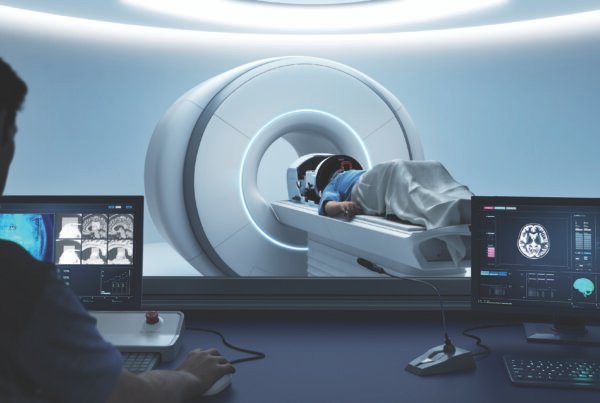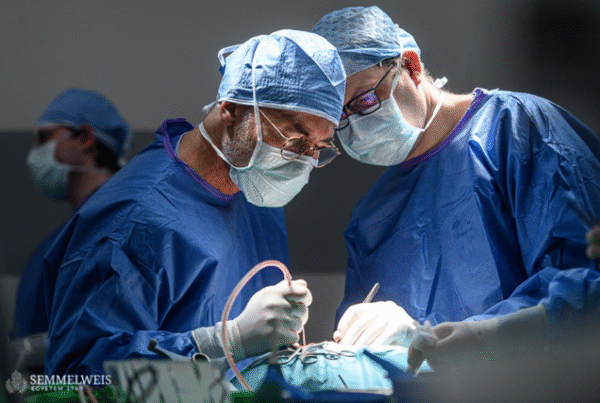If you’ve been suffering from a spinal condition, you likely have many questions. Perhaps you’ve been advised that spinal fixation—a surgical procedure used to stabilize and relieve pain in your spine—is your best option. But navigating through medical jargon, treatment choices, and perhaps weighing international options can feel overwhelming.
In this comprehensive guide, we’ll aim to answer patient candidates inquiring about treatment abroad to their most pressing questions and address common concerns about spinal fixation. First we will explore what spinal fixation really is, when it’s necessary, and what options are available, from traditional surgeries to the latest minimally invasive technologies. In our upcoming blog posts, we will also compare treatment possibilities abroad, examining potential destinations offering high-quality care at significant savings. Moreover, we will tackle essential practicalities: how to verify surgeon credentials, hospital safety abroad, insurance coverage, and hidden costs to watch out for. We’ll also discuss the emotional side—what life after surgery looks like, how to mentally prepare yourself, and what patients wish they had known sooner.
By the end of this series, you’ll have clarity about your options, confidence in your decisions, and a clear path forward—including actionable advice for optimizing your recovery and a breakdown of potential savings by choosing treatment abroad.
Part 1 – The Basics of Spinal Fixation
What is Spinal fixation and why is it necessary?
Spinal fixation is a surgical procedure designed to stabilize segments of the spine by using specialized hardware such as screws, rods, plates, and cages. These implants help immobilize the affected vertebrae, promoting proper alignment, reducing pain, and preventing further damage. The procedure becomes necessary when the spine’s natural structure is compromised—often due to conditions such as herniated discs, spinal fractures, spinal instability, severe degeneration, scoliosis, or tumors affecting spinal stability. Without proper fixation, patients may experience debilitating pain, progressive loss of mobility, and increased risk of nerve damage. Essentially, spinal fixation restores spinal strength, realigns vertebrae, and allows individuals to regain mobility and reclaim their quality of life.
What Conditions Might Require Spinal Fixation?
Spinal fixation surgery becomes necessary when spinal stability is compromised, and conservative treatments fail to provide relief. Common conditions that typically require spinal fixation include:
- Spinal fractures: Injuries from trauma, accidents, or osteoporosis causing fractures and instability in the spine.
- Spinal Instability or Spondylolisthesis: A condition where a vertebra slips out of alignment, causing severe pain or nerve problems.
- Spinal Deformities: Conditions such as scoliosis or kyphosis, where spinal curvature necessitates surgical correction.
- Tumors and Infections: Tumors or infections within or around the spine that destabilize vertebral integrity and require surgical intervention.
- Spinal Stenosis (with instability): Narrowing of the spinal canal compressing nerves, typically requiring fixation only if the spine becomes unstable following decompression surgery, especially when multiple segments are affected.
Spinal fixation becomes necessary when non-surgical treatments, such as medication, physiotherapy, and injections, fail to adequately relieve pain, restore function, or halt the progression of spinal deterioration. In these situations, fixation surgery provides the stability needed for healing, improved quality of life, and long-term spinal health.
How Does Spinal Fixation Surgery Work, and What Implants Are Used?
Spinal fixation surgery is a procedure designed to stabilize the spine by connecting two or more vertebrae using specialized implants. The primary goal is to restrict abnormal movement, decompress any stenosis, thus relieving pain, and allowing the spine to heal properly.
During the procedure, surgeons typically use hardware such as rods, screws, plates, cages, or hooks. These implants hold vertebrae firmly in position, allowing bone growth or fusion to occur naturally between segments. For example, titanium screws and rods are common due to their strength, lightweight properties, and compatibility with MRI imaging.
Advanced techniques, such as minimally invasive spinal fixation, utilize small incisions and specialized tools guided by imaging technologies (like portable X-ray radiography, fluoroscopy or neuronavigation), resulting in quicker recovery times and reduced risk of complications compared to traditional open procedures.
Traditional Spinal Fusion vs. Minimally Invasive Fixation: What’s the Difference?
When considering spinal surgery, patients often encounter terms like traditional spinal fusion and minimally invasive fixation. Although both aim to stabilize the spine, reduce pain, and restore mobility, the methods, benefits, and patient experiences differ significantly.
Traditional Spinal Fusion
Traditional spinal fusion has been the standard approach for decades. In this technique:
- The surgeon makes a relatively large incision to directly access the spine.
- Muscles and soft tissues are moved aside or sometimes detached, allowing clear visibility of the spinal bones.
- Bone grafts (taken from the patient or synthetic sources) are placed between vertebrae to encourage them to fuse together.
- Metal implants (such as rods, screws, and plates) stabilize the spine during the healing process.
Advantages:
- Well-established with predictable outcomes.
- Ideal for complex cases requiring extensive reconstruction or correction.
Downsides include:
- Longer hospital stays (3-7 days) and slower recovery.
- Increased postoperative pain due to extensive tissue manipulation.
- Higher risks of infection or muscle injury.
Minimally Invasive Spinal Surgery (MISS)
MISS approaches use specialized instruments and imaging technology to perform the same spinal fixation procedure with less tissue disruption. Key features include:
- Smaller incisions (typically less than 2-3 cm), guided precisely by intraoperative imaging or robotic assistance.
- Muscles are gently separated instead of being cut, significantly reducing tissue trauma.
- Screws are inserted through tubes or small channels, guided precisely by real-time imaging.
- In presence of instability, cages are implanted in an open manner.
Advantages of MISS:
- Reduced pain, shorter hospital stays, and quicker recovery.
- Decreased blood loss and lower risk of complications such as infections.
- Less scarring and better cosmetic outcomes.
However, MISS requires:
- Specialized surgical training and expertise.
- Advanced surgical equipment (robotic or image-guided technology).
Are there alternatives to spinal fixation surgery, or is surgery the only option?
Spinal fixation surgery is often recommended for serious spinal conditions or injuries; however, it’s not always the first or only option. Depending on your diagnosis, severity of symptoms, and personal goals, you may have several alternatives to consider:
-
Conservative (Non-Surgical) Treatments
In many cases, spine specialists initially recommend conservative treatments before considering surgical intervention. These approaches aim to relieve pain, reduce inflammation, and strengthen the muscles supporting your spine. Common methods include:
- Physical Therapy: Personalized exercises to strengthen supporting muscles, improve flexibility, and correct posture.
- Pain Management: Medications, like non-steroid anti-inflammatory drugs (NSAIDs), corticosteroids, muscle relaxants and other anesthetics.
- Physical Therapy & Rehabilitation: Targeted exercises, stretching, and strength-building routines to alleviate pressure and improve spinal alignment.
- Lifestyle Adjustments: Weight management, ergonomic adjustments, improved posture, and avoiding activities that exacerbate pain.
-
Interventional Pain Management
Minimally invasive interventional techniques may offer significant relief without the need for surgery. Common examples include:
- Epidural Steroid Injections: Reduces inflammation and nerve irritation for conditions such as herniated discs or spinal stenosis.
- Facet Joint Injections: Addresses pain caused by facet joint arthritis.
- Radiofrequency Ablation (RFA): Minimally invasive nerve-blocking treatment to relieve chronic pain, especially from facet joints.
-
Minimally Invasive Procedures (Without Fixation)
Some minimally invasive interventions might delay or eliminate the need for traditional spinal fixation:
- Disc Decompression Procedures: Techniques such as percutaneous disc decompression, disc nucleoplasty, or laser disc decompression to reduce pressure and pain.
- Vertebroplasty or Kyphoplasty: Injecting bone cement to stabilize vertebral fractures and alleviate pain without needing full fixation hardware.
- Epidural Adhesiolysis: Removing scar tissue through a minimally invasive approach to relieve nerve compression and reduce pain.
When Is Surgery Inevitable?
While conservative or minimally invasive alternatives are effective in many cases, surgery typically becomes necessary when:
- The spine is unstable, causing progressive deformity.
- There is significant compression of nerves or the spinal cord.
- Severe chronic pain persists despite conservative therapies.
- Neurological symptoms worsen (e.g., increasing weakness, numbness, loss of bladder control).
How Effective Is Spinal Fixation in Relieving Pain and Restoring Mobility?
Spinal fixation surgery is widely recognized as an effective treatment to stabilize the spine, alleviate chronic pain, and restore mobility, particularly when conservative treatments have failed. Studies indicate that the majority of patients undergoing spinal fixation experience significant improvements in both pain management and functional abilities, enhancing their overall quality of life.
Pain Relief
Spinal fixation surgery directly addresses the root cause of spinal pain—instability, nerve compression, or structural abnormalities. According to clinical studies, around 60% to 70% of patients undergoing spinal fixation for chronic back pain experience clinically significant relief of their pain and improvement in function when paired with proper postoperative rehabilitation (Fritzell et al. 2001; Ostelo et al., 2009; Geurts et al., 2021). (These figures can vary depending on surgical techniques used, patient selection, and adherence to postoperative rehabilitation protocols).
Pain relief is typically most noticeable within the first three to six months post-surgery, improving further over time with proper rehabilitation and lifestyle modifications.
Mobility and Functional Improvement
In terms of mobility and physical function, spinal fixation often restores movement and significantly improves daily function:
- Restoration of Stability: By stabilizing the vertebrae, spinal fixation reduces nerve compression and limits painful movements, which in turn allows patients to move with greater confidence and comfort.
- Improved Daily Activities: Patients frequently report that they can return to normal daily activities—such as walking, driving, working, and exercising—often within weeks to months after surgery.
- Long-term Functionality: Research demonstrates sustained functional improvements for many years post-surgery. According to the Spine Patient Outcomes Research Trial (SPORT), patients with lumbar degenerative spondylolisthesis treated surgically, which often included fusion, maintained significantly greater improvements in function compared to non-operative treatment through 8 years of follow-up (Abdu et al., 2018).
Factors Influencing Effectiveness
Several factors influence the level of effectiveness and the speed of recovery, including:
- Type and severity of spinal condition
- Surgical technique (traditional open vs. minimally invasive fixation)
- Patient age, overall health, and compliance with post-operative instructions
- Quality of rehabilitation and follow-up care
Realistic Expectations
It is important for patients to set realistic expectations. Spinal fixation provides substantial improvement, but individual outcomes can vary. Not all patients regain complete, unrestricted mobility, especially if nerve damage or chronic issues existed pre-surgery. However, most patients experience significant improvement in pain levels and functional ability, leading to an enhanced quality of life.
Ultimately, spinal fixation surgery is a highly effective treatment option when non-surgical methods have been exhausted, providing reliable pain relief and meaningful restoration of mobility.
What Are the Potential Risks and Complications of Spinal Fixation Surgery?
Like any major surgical procedure, spinal fixation carries certain risks and potential complications. While the majority of patients experience successful outcomes, it is essential to be aware of the possible challenges associated with the surgery. Understanding these risks allows patients to make informed decisions and take necessary precautions to ensure the best possible recovery.
Common Risks and Complications
- Infection
- Infection at the surgical site occurs in approximately 1% to 4% of spinal fixation procedures.
- Infections involving the hardware are rare but may require additional surgery to remove or replace implants.
- Preventative measures include preoperative antibiotics, sterile surgical techniques, and proper post-operative wound care.
- Bleeding and Blood Clots
- Spinal fixation is a complex surgery, and while blood loss is typically well-managed, excessive bleeding may require a transfusion.
- Blood clots (deep vein thrombosis, DVT) can form in the legs due to limited mobility after surgery. Preventative strategies include early ambulation, compression stockings, and blood-thinning medications if necessary.
- Nerve Damage or Spinal Cord Injury
- Since spinal fixation involves operating near the spinal cord and nerve roots, there is a small risk of nerve damage.
- Symptoms can include numbness, tingling, weakness, or in severe cases, paralysis. However, the risk is minimized with experienced surgeons and modern intraoperative monitoring techniques.
- Hardware Complications (Breakage, Loosening, or Malpositioning)
- Titanium or steel implants, such as rods, screws, and plates, are designed to be strong, but in rare cases, they can break or loosen over time.
- Hardware failure may require revision surgery to correct the problem.
- Proper surgical technique and patient adherence to post-operative movement restrictions help minimize this risk.
- Non-Union (Failure of Bone Fusion)
- In cases where bone fusion is required, sometimes the vertebrae do not fuse properly, leading to ongoing instability and pain.
- This complication occurs in 5% to 15% of cases, with higher risk in smokers, diabetics, and patients with osteoporosis.
- Use of bone grafts, growth stimulators, and adherence to post-surgical restrictions help promote successful fusion.
- Chronic Pain or Adjacent Segment Disease (ASD)
- Some patients may experience persistent pain after surgery, particularly if pre-existing nerve damage is present.
- Adjacent segment disease (ASD) occurs when the vertebrae above or below the fusion experience increased stress, leading to degeneration over time.
- Regular follow-up care and rehabilitation exercises can help manage and prevent ASD.
Reducing the Risk of Complications
Patients can take several proactive steps to reduce their risk and improve surgical outcomes:
- Choose an experienced spine surgeon specializing in spinal fixation and minimally invasive techniques.
- Follow pre-surgical guidelines, including stopping smoking, maintaining a healthy weight, and managing underlying conditions.
- Adhere to post-operative care by avoiding excessive movement, following physical therapy recommendations, and attending regular check-ups.
- Ensure proper nutrition, particularly with calcium and vitamin D, to support bone healing.
While spinal fixation is a highly successful procedure, being aware of these potential risks helps patients take necessary precautions and achieve the best possible outcome.
What Can Be Done to Improve Recovery and Long-Term Outcomes After Spinal Fixation?
A successful spinal fixation surgery is only part of the journey—proper post-operative care and rehabilitation play a crucial role in ensuring the best long-term outcomes. Patients who take proactive steps in their recovery can significantly improve their mobility, reduce pain, and maintain spinal stability for years to come. Here’s what can be done to optimize recovery and enhance long-term success after spinal fixation surgery.
-
Follow Post-Surgical Movement Guidelines
- Patients must follow activity restrictions to allow the spine to heal properly.
- Bending, twisting, and heavy lifting should be avoided for at least 6-12 weeks after surgery.
- Using a brace (if prescribed) can provide additional spinal support while healing.
-
Prioritize Physical Therapy and Rehabilitation
- Physical therapy (PT) usually begins a few weeks after surgery, with a customized exercise plan designed to restore mobility and strength.
- Early-stage PT focuses on gentle stretching and core strengthening to support the spine.
- Over time, therapy progresses to balance training and resistance exercises to improve posture and prevent future spine issues.
-
Maintain a Healthy Lifestyle
- Proper nutrition is essential for bone healing. Patients should consume foods rich in calcium, vitamin D, and protein to support recovery.
- Staying hydrated helps maintain tissue flexibility and reduces inflammation.
- Weight management is crucial, as excess weight puts additional strain on the spine and may slow recovery.
-
Manage Pain and Inflammation Effectively
- Patients will typically receive pain medications, such as NSAIDs, acetaminophen, or opioids (short-term use only).
- Nerve pain medications, such as gabapentin, may be prescribed if nerve-related pain persists.
-
Avoid Smoking and Alcohol
- Smoking significantly increases the risk of non-union (failed fusion) and slows the healing process by reducing blood flow to the bones.
- Excessive alcohol consumption can interfere with medications, impair bone healing, and increase the risk of falls or accidents.
-
Gradually Return to Daily Activities
- Most patients can return to light activities (e.g., walking, desk work) within 4-6 weeks, but heavy physical work or strenuous exercise should be avoided for at least 3-6 months.
- Walking is one of the best activities to promote circulation, prevent stiffness, and build endurance without stressing the spine.
-
Attend Regular Follow-Up Appointments
- Routine check-ups with the surgeon are essential to monitor spinal healing, hardware integrity, and overall progress.
- X-rays or CT scans may be done periodically to ensure proper spinal alignment and fusion.
- If any issues arise (e.g., persistent pain, numbness, weakness), patients should contact their doctor immediately to address concerns early.
-
Prevent Future Spine Issues
- Strengthening core muscles helps stabilize the spine and reduce the risk of future degeneration.
- Practicing good posture while sitting, standing, and lifting reduces unnecessary spinal stress.
- Engaging in low-impact activities like swimming, yoga, and cycling helps maintain flexibility and strength without excessive strain.
How Long Does Spinal Fixation Hardware Stay in the Body? Does It Need Removal Later?
Spinal fixation hardware is typically designed to remain in the body permanently, providing long-term stability and support for the fused or stabilized vertebrae. In most cases, the implants do not need to be removed unless complications arise. However, there are specific scenarios where hardware removal may be necessary.
How Long Does the Hardware Stay in Place?
- Permanent Solution: In most cases, spinal fixation implants—such as screws, rods, and plates—are intended to stay in place for life.
- Bone Fusion Process: When spinal fusion is involved, it can take 6 months to 2 years for the bones to fully fuse around the hardware, after which the implants primarily serve as reinforcement.
- No Routine Removal: Unlike some orthopedic implants, spinal hardware is not routinely removed unless complications occur.
When Is Hardware Removal Necessary?
Although removal is uncommon, certain conditions may require it:
- Persistent Pain or Irritation – Some patients experience hardware-related pain or discomfort due to irritation of surrounding tissues.
- Hardware Loosening or Breakage – Over time, screws or rods can loosen or break, especially if fusion does not fully develop.
- Infection – If an infection occurs around the implants, hardware removal may be necessary to treat the infection and allow healing.
- Allergic Reaction or Sensitivity – Rarely, patients may develop a metal allergy or sensitivity to titanium or other implant materials.
- Need for Additional Surgery – In cases where further spinal surgery is required (e.g., adjacent segment disease), hardware may be removed or replaced.
What Happens If Hardware Needs to Be Removed?
- Surgical Procedure: Hardware removal is typically performed through a minor revision surgery, often with a faster recovery than the original fixation procedure.
- Timing: If removal is necessary, surgeons typically wait until bone fusion is complete before taking out the implants.
- Outcomes: Most patients experience no negative effects after hardware removal, provided that spinal stability is maintained.
How Does Robotic or Image-Guided Surgery Improve Spinal Fixation Procedures?
Robotic and image-guided technologies have significantly improved the precision, safety, and outcomes of neurosurgery procedures. These advanced methods are becoming increasingly popular, although they are not common practice yet for spinal fixation cases yet.
Enhanced Precision and Accuracy
- Real-time Imaging: Robotic and image-guided systems provide surgeons with real-time, three-dimensional visualization of the spine during surgery, allowing for highly accurate implant placement.
- Minimized Human Error: Robotics significantly reduces variability associated with human hands, ensuring consistent accuracy when positioning screws, rods, and cages.
Reduced Risks and Complications
- Lower Complication Rates: Robotic and image-guided spine surgery may reduce complications such as nerve damage, misplaced screws, and postoperative infections.
- Less Radiation Exposure: Advanced navigation systems minimize radiation exposure for both patients and surgeons compared to traditional fluoroscopy methods.
Improved Surgical Outcomes
- Shorter Hospital Stays: Greater precision leads to less tissue disruption, resulting in quicker recovery and shorter hospital stays.
- Better Implant Positioning: Precise placement improves the longevity of spinal implants, reducing the likelihood of hardware loosening or failure over time.
Increased Safety and Patient Confidence
- Enhanced Preoperative Planning: Surgeons utilize advanced imaging and, in some cases, robotic technology to create highly detailed preoperative plans, allowing for more precise strategizing of the procedure.
- Contribution to Accurate Execution: The enhanced visualization and precision offered by these technologies contribute to more accurate implant placement and surgical execution according to the detailed plan. While this precision supports the potential for improved outcomes, the extent to which it consistently leads to fully predictable outcomes and directly manages all patient expectations in routine spinal fixation is still evolving and varies with the technology used and individual patient factors. Advanced applications like widespread VR planning for expectation management are currently more common in larger centers or research settings rather than standard practice.
Key Takeaway
Robotic and image-guided surgery significantly improve the precision, safety, and outcomes of spinal fixation procedures. Patients seeking advanced and reliable treatment options will find these technologies particularly beneficial, offering greater peace of mind and faster recoveries.
Despite these advantages, the widespread adoption of robotic and image-guided surgery for spinal fixation is still developing, primarily due to factors such as the high initial cost of the equipment, the steep learning curve and increased operating time initially required for surgical teams, and the need for more long-term studies demonstrating clear superiority in clinical outcomes compared to traditional, well-established techniques.
How Can Patients Reduce the Risk of Needing Spinal Fixation in the Future?
Preventing spinal issues that lead to the need for spinal fixation surgery is achievable through proactive lifestyle choices and health management. Here are practical steps patients can take to significantly lower their risk:
Maintain a Healthy Weight
- Less Strain on the Spine: Carrying excess weight increases stress on your spine, accelerating wear-and-tear that can lead to degenerative disc diseases and instability.
- Balanced Diet: A nutrient-rich diet supports healthy bones and discs, helping prevent conditions such as osteoporosis, which can necessitate spinal fixation.
Regular Exercise and Core Strengthening
- Strengthen Core Muscles: Regular, low-impact exercises like swimming, walking, yoga, or Pilates build core muscle strength, stabilizing your spine.
- Improved Posture: Consistent physical activity helps maintain proper spinal alignment, reducing unnecessary stress on vertebral structures.
Proper Ergonomics and Posture
- Ergonomic Work Environment: Setting up an ergonomic workspace can significantly decrease the risk of repetitive strain injuries or chronic pain.
- Mindful Posture: Regularly practicing good posture—whether sitting, standing, or lifting—protects spinal structures from undue stress and injury.
Avoid Smoking
- Reduced Bone Density Risk: Smoking accelerates disc degeneration and reduces bone density, dramatically increasing the likelihood of spinal complications.
- Enhanced Healing Potential: Non-smokers experience better spinal healing and lower risks of future spinal conditions.
Early Intervention and Regular Medical Check-Ups
- Timely Treatment: Seeking medical advice at the first signs of back pain or discomfort can prevent minor conditions from progressing into surgical cases.
Use Proper Lifting Techniques
- Safe Lifting Practices: Learning and consistently applying safe lifting techniques—such as bending at the knees and keeping items close to your body—prevents acute spinal injuries and chronic strain.
Key Takeaway
Reducing the risk of spinal fixation surgery requires maintaining spinal health through lifestyle adjustments, proper ergonomics, and proactive health management. Small daily habits can make a significant difference, preserving your mobility and reducing the likelihood of future spinal interventions.
Conclusion
Spinal fixation can be life-changing, restoring stability and relieving pain when other treatments fail. Whether you’re considering surgery in your home country or abroad, understanding your treatment options, risks, and recovery strategies is crucial.
With advancements in minimally invasive techniques and robotic-assisted procedures, patients now have more options than ever for safer, more effective spinal treatments. By making informed choices and committing to post-surgical care, you can achieve long-term spinal health and an improved quality of life.
Ready to Find Out if Spinal Fixation Is Right for You?
If you’re struggling with chronic back or neck pain and wondering whether spinal fixation could offer lasting relief, we’re here to help.
Get a personalized evaluation from a leading spine surgery expert—such as Prof. Dr. Péter Banczerowski, one of Europe’s top neurosurgeons.
📄 Simply upload your MRI/CT scans and medical documentation for review.
💬 Reach out to us directly on WhatsApp for guidance and next steps.
Our team will coordinate a remote consultation and provide you with clear options, including international treatment possibilities tailored to your case.

If you’re struggling with chronic back or neck pain and wondering whether spinal fixation could offer lasting relief, we’re here to help.
Get a personalized evaluation from a leading spine surgery expert—such as Prof. Dr. Péter Banczerowski, one of Europe’s top neurosurgeons.
📄 Simply upload your MRI/CT scans and medical documentation for review.
💬 Reach out to us directly on WhatsApp for guidance and next steps.
Our team will coordinate a remote consultation and provide you with clear options, including international treatment possibilities tailored to your case.
References (Sources):
- Abdu, W. A., Sacks, O. A., Tosteson, A. N. A., Zhao, W., Tosteson, T. D., Morgan, T. S., Pearson, A., Weinstein, J. N., & Lurie, J. D. (2018). Long-Term Results of Surgery Compared With Nonoperative Treatment for Lumbar Degenerative Spondylolisthesis in the 1 Spine Patient Outcomes Research Trial (SPORT). Spine, 43(23), 1619–1630. 2
- Fritzell, P., Hägg, O., Wessberg, P., & Nordwall, A. (2001). Chronic low back pain and fusion: A comparison of three surgical techniques—a prospective multicenter randomized study from the Swedish lumbar spine study group. Spine, 26(23), 2521–2534. https://doi.org/10.1097/00007632-200112010-00002
- Geurts, J. W., Willems, P. C., van Wijk, R. M., Kleijnen, J. P., van Kleef, M., & Dirksen, C. D. (2021). Decision making in surgical treatment of chronic low back pain: The performance of prognostic tests to select patients for lumbar spinal fusion. Pain Practice, 21(1), 86–97. https://doi.org/10.1111/papr.12969
- Ostelo, R. W. J. G., Costa, L. O. P., Maher, C. G., de Vet, H. C. W., van Tulder, M. W., & Natour, J. (2009). Rehabilitation following first-time lumbar disc surgery: A systematic review within the framework of the Cochrane Back Review Group. Spine, 34(6), E347–E352. https://doi.org/10.1097/BRS.0b013e318195b0f6






